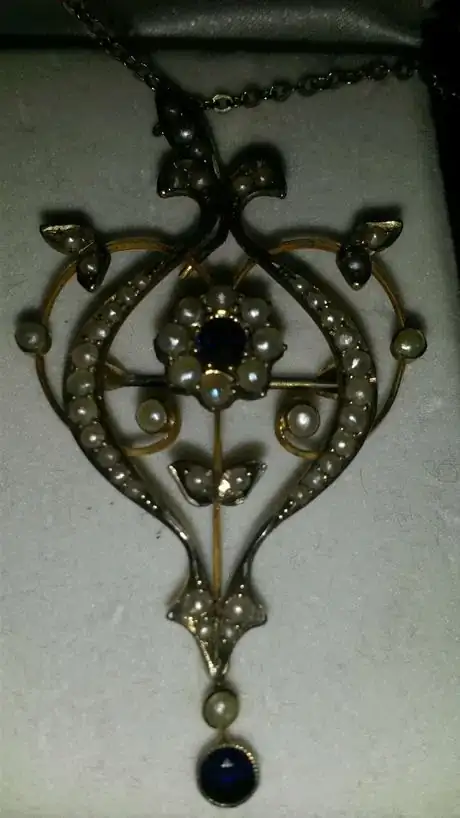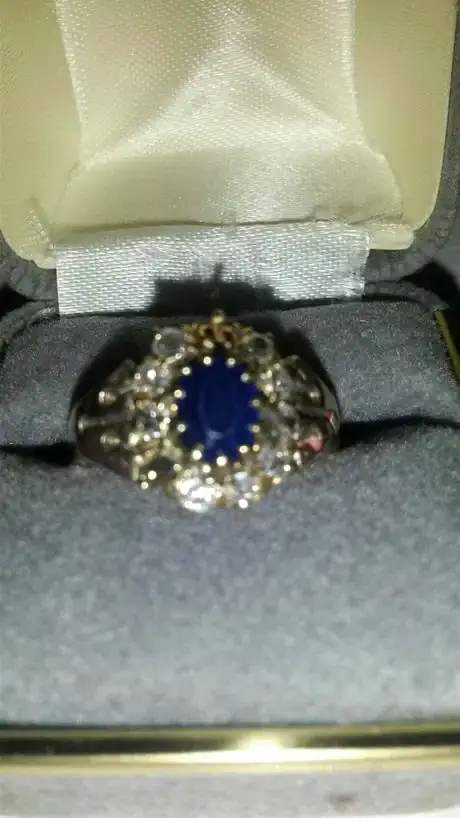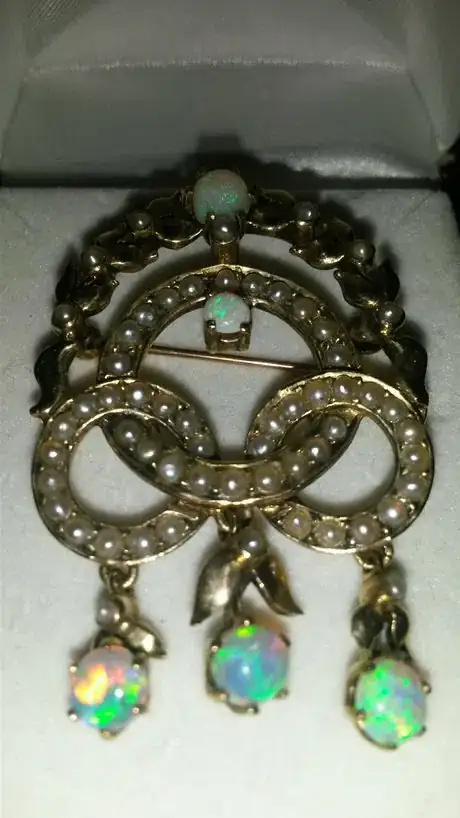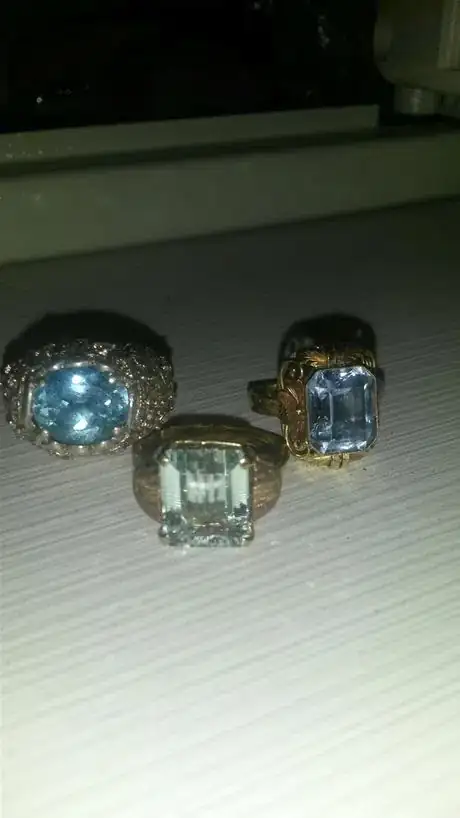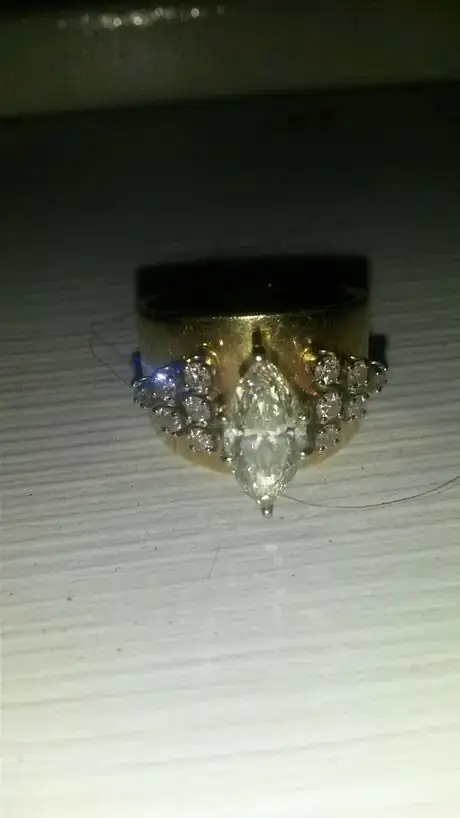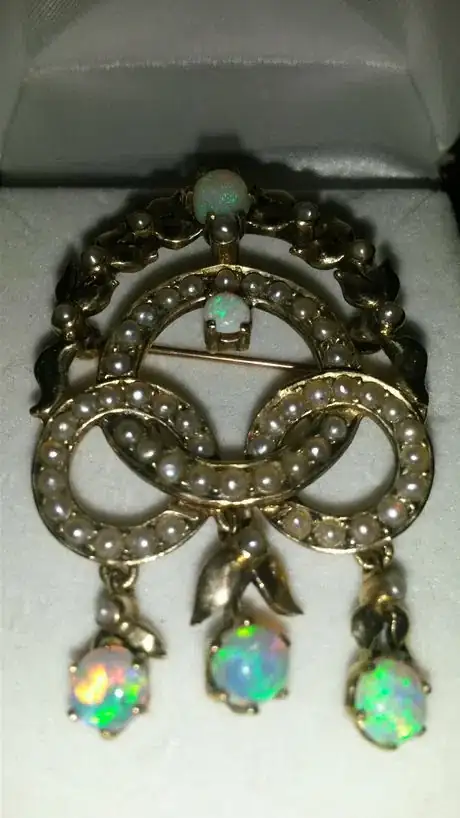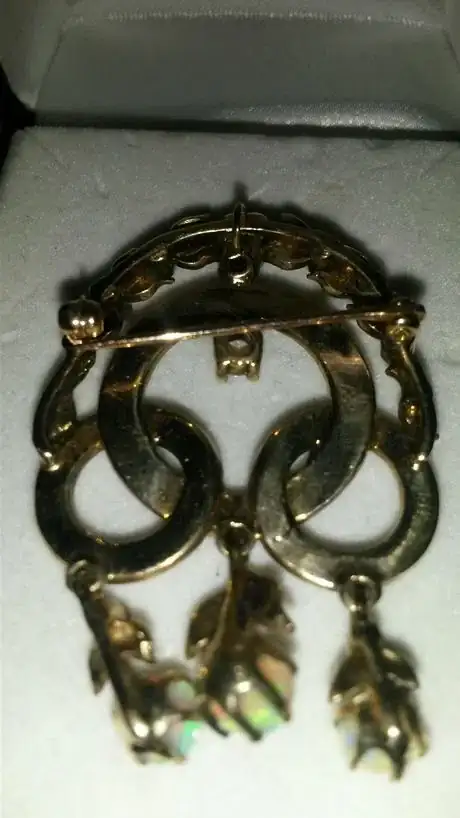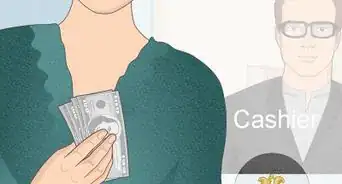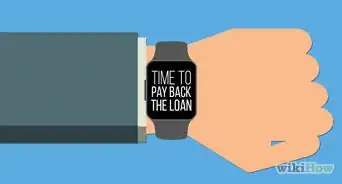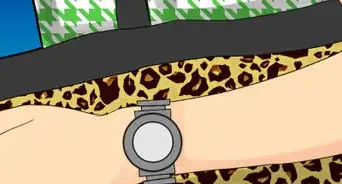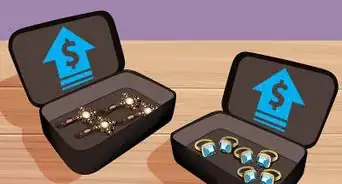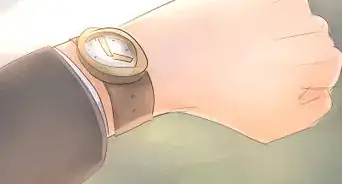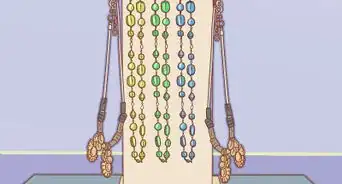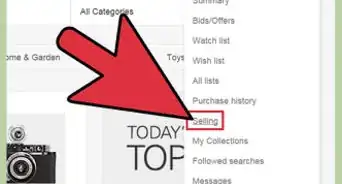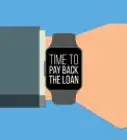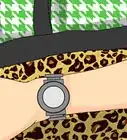wikiHow is a “wiki,” similar to Wikipedia, which means that many of our articles are co-written by multiple authors. To create this article, 10 people, some anonymous, worked to edit and improve it over time.
This article has been viewed 96,141 times.
Learn more...
You can usually find a buyer for your antique jewelry by checking different places that buy jewelry, however, knowing how to get the best price for your antique jewelry is another matter altogether. Getting the best price starts by educating yourself about vintage jewelry and learning how much the jewelry is worth. The next most important factor is knowing exactly where to sell it to get the most for your jewelry.
Steps
Setting the Price
-
1Look at the aesthetics objectively. Ask yourself if someone unrelated to you would genuinely be interested in wearing the piece of jewelry. Look through fashion magazines; many of them have upscale antique and current antique style jewelry. This will give you an idea if the jewelry you have is currently in style. If it is, selling it will be much easier. Be aware that when jewelry holds sentimental value for you it can often affect how much you want to sell it for, and it's much harder to take into consideration how others would impartially value it. While the "Antique" style is currently in, it is only in to a certain degree. If your pieces are not in vogue you may be better off selling them for their metal or gemstones.
-
2Consider the condition. Simply put, jewelry that is less worn will sell better than jewelry that has been worn frequently or is damaged. Pieces that have issues can be restored, which may improve the likelihood of selling them, but the restoration costs for major repairs can actually be higher than the money you will make from selling the piece once the repairs are complete.[1] Plus, serious collectors often do not like pieces that have been restored, so restoration often reduces the value of the piece. If you are only replacing missing gemstones, by all means repair it, provided they are easy to replace and the stones from that period are readily available. The good part is that it's unusual to be able to tell if a stone has been replaced if it was restored correctly.Advertisement
-
3If you know the piece is valuable, based on research and family history, it may make sense to have the jewelry appraised. Appraisals, especially written ones, are never free, especially from an organization such as the GIA (The Gemological Institute of America, formed in 1931) or even a local jewelry store, and can run in the hundreds of dollars for items worth thousands, so keep that in mind. And an appraisal for insurance purposes is always higher than what your jewelry is worth on a retail basis. Expect it to be less than half it's replacement value when you're trying to sell it. You are closer to a tenth of the insurance value. And remember, even when a piece is valuable people seldom want to pay what it's worth. Older appraisals can tell someone what stones are in the setting, the gold/platinum or silver content and design as well as age, but not current value. It's always a good idea to keep all of your appraisals to show how the value has increased. And a good rule of thumb is to count on it's doubling in value approximately every 7 years or so, based on how the fine metal markets are doing.
-
4Give the jewelry a good cleaning. Unless otherwise instructed by an antique collector or an appraiser, you should clean the jewelry to make it look as appealing as possible. If you do not know how to clean a piece properly, though, you could end up damaging it. Taking the jewelry to a jeweler or other professional is your best option unless you are absolutely certain that you can clean the piece without harming it. However, be very cautious with using a jeweler to clean stones; if the stone has any inclusions, cleaning with a sonic machine or steam could destroy the stone-literally breaking it into pieces, especially diamonds.
- The safest way to clean most jewelry is to gently scrub it with mild soap and warm water, using a soft toothbrush. Toothpaste can work on hard gemstones but it can scratch gold and softer gemstones such as opals. Even a toothbrush can cause marks on very soft high gold content jewelry and soft stones.[2]
- Never use chlorine to clean gold or gemstones. Ammonia is safe to use on hard gemstones but is too abrasive for many gemstones. If you are not sure what the stones are, since many look alike, such as aquamarines and topaz, you are better off using a soft cloth and dish soap with warm, not hot or cold, water. Rinse very well. The very safest way to clean antique jewelry is by using a microfiber cloth without any liquids at all.[3]
-
5Gauge the worth of gold by looking at the karat stamp, but be aware that many places can buy stamps and put incorrect stamps on jewelry. The karat stamp reveals how pure the gold is. A 24-karat gold piece is pure gold and will be worth approximately the current running price of gold per ounce, at the selling cost, not buying, which is always higher. Most jewelry, especially antique pieces, are only 9-karat pieces, meaning that they are only about 37.5 percent pure. As such, you will only receive, at most, one third the price of scrap gold. Other pieces can be as high as 23 karat gold and those pieces will be malleable to the touch and you can actually make marks in the jewelry itself. Finding 23k gold is unusual in the USA and Europe and much more common in Asia and India. It has a reddish look, compared to the yellow gold the USA and Europe is more used to seeing.[4]
- Some very old gold does not have a karat stamp so you may want to test it to make sure that it is actually gold. Often when a piece is sized, or worn often the karat stamp may have been cut off or worn off making it impossible to tell the purity of the gold. Also, given the propensity for some makers to incorrectly mark gold you almost always want to chemical test to check the purity. Another quick way to test the jewelry is to expose it to a magnet. If it sticks, then it is not real gold. This test does not work on all metals, including platinum, which may or may not have a recognizable stamp.
-
6Brush up on gem value. Knowing how valuable certain gemstones are can give you a good idea of how valuable your jewelry is. Of course , without official certification, you have no way of knowing just how valuable or high-quality a specific gem is, or even if it is real. That is where a jeweler comes in. They can tell you what stones are in your jewelry and if they are real. Even if you don't get an actual appraisal you will have an idea of the jewelry's value based on the stones. The types of stones used in your jewelry can also often help you date pieces so that you have more information for the buyers.
Choosing Where to Sell
-
1Sell the jewelry to a jewelry shop. Almost any jewelry shop that buys jewelry will be willing to purchase yours, provided it's in fairly decent condition. The jeweler will usually pay you up to 40 percent of the gold's current scrap price for gold jewelry, and if the piece itself is signed by a maker such as Tiffany's or another designer, they may pay you more for the jewelry itself instead of only paying you for the metal and the gems. It is best to talk to several jewelers before making a final sale, however, to ensure that you get the best offer. Be aware that most jewelry stores buy jewelry based on scrap prices, not the selling price of gold, so you will likely get approximately 1/10th to 1/7th the selling value of the item. Unless it has a tremendous provenance or value do not expect a very high return when selling vintage jewelry.
-
2List the jewelry online. Create a listing for your jewelry on an auction website, free online classifieds website, or on a website that specializes in the sale of vintage or antique goods. Be sure to include plenty of pictures and to mention any certification that the jewelry has. Also make sure to sell a piece for a cost that is comparable with other similar pieces being sold on the same website.
- Set up shop on your own if you have a lot of jewelry to sell. You can create your own webpage fairly easily, and it might be a better option for you if you have a large supply of antique jewelry that you plan on selling on a long-term basis.
-
3Sell your jewelry for parts. If you are unable to find a buyer interested in your jewelry as a wearable piece, you may need to sell it as scrap. Mail-away gold-buying operations allow you to send your gold in and will send a check back to you in return, but while this is convenient, it pays the least of any of your options. So only do a "Gold Party" or Mail Order envelope as a last resort. Meanwhile, many coin shops are willing to purchase gold jewelry if it is pure enough, though, and will usually pay a higher price.
- If your jewelry is in bad shape but the gems are in good condition, a jeweler may be interested in acquiring the piece so that the gems can be removed and reused in another piece, but this does not often happen.
-
4Take the jewelry into a pawn shop. Pawn shops will test the jewelry to make sure that its metals and gemstones are real, and if everything is valuable, they are usually willing to buy the piece at fraction of it's value, it's how they make money, by buying pieces of jewelry for as little as possible. It is a quick way to make a little money, and as an added benefit, if you change your mind a day or two later, you can return to the pawn shop and buy it back (with interest).[5]
Community Q&A
-
QuestionHow does the average seller of his jewelry fair in this business?
 Community AnswerIt depends on a lot of variables. Jewelry is a highly competitive field, so quality, style, price point, and marketing all play a large role in your success.
Community AnswerIt depends on a lot of variables. Jewelry is a highly competitive field, so quality, style, price point, and marketing all play a large role in your success.
References
- ↑ https://www.mygemologist.com/learn/selling-jewelry/how-to-sell-your-jewelry/
- ↑ https://www.invaluable.com/blog/how-to-clean-antique-and-vintage-jewelry/
- ↑ http://www.bernardine.com/jewelry-care.htm
- ↑ http://articles.latimes.com/2009/may/10/business/fi-perfin10
- ↑ https://www.mygemologist.com/learn/selling-jewelry/how-to-sell-your-jewelry/
About This Article
If you set the right price for your antique jewelry and advertise well, it should be fairly easy to sell. If you know your piece is valuable, get a jewelry appraisal to find out how much it’s worth. Then, before you sell it, give it a gentle but thorough clean so it looks its best. Take plenty of photos so potential buyers can see all its angles. Then, list the piece on a classified website like Craigslist, eBay, or Etsy. If you don’t have any luck selling online, take it to your local pawn shop. While you probably won’t get its full value, it’s quicker and easier than waiting for a buyer to make an offer. To learn how to sell your antique jewelry for parts, read on!
